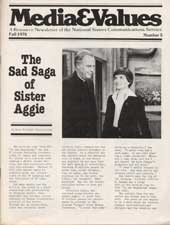In Terms of Media: Computers
|
This article originally appeared in Issue# 5
|
An understanding of computers is, today, necessary basic knowledge for all of us. But the answer to "what is a computer?" is not simple, despite the fact that the computer is based on very logical human processes and very familiar concepts.
Like the automobile, which is more important for what it does (transport you from one place to another) than for its size, style, or other physical aspect, the computer is more significant for the processes it can perform—software—than for its physical components—hardware. A computer isn't of much use unless it is doing something, unless it is creating meaningful information out of the numbers and symbols and instructions (programs) that come to it as input or that are stored in its "memory".
It got its name because it could compute, i.e., solve arithmetic problems faster than the human brain. Today computers do a lot more than just arithmetic, but the adding, subtracting and comparing of data, whether numbers, words or symbols, is the basis of computer operations. As for its output, that can take the form of printed sheets ("print- outs" or, increasingly, images on a TV-like Cathode Ray Tube (CRT) which allows information to be displayed for correction, change or simply searching for the right item. A touch of a button activates a printer which will then give a permanent copy if desired (an airplane ticket, for example).
The important thing about computers is that they take the routine out of routine tasks: reservations, inventories, accounting records, insurance for forms. The founder of the company that is now IBM worked originally for the U.S. Census Bureau, where he devised a method by which holes in cards could be used to record, compile and tabulate census data. That was in 1887. Today, punched cards are still being used to put information into a computer, but magnetic cards, tapes, and discs are growing in use, especially since One magnetic card can contain as much information as a large stack of paper ones.
But such is the trend in computing.. .the physical components are getting smaller as the power and complexity of the computer is multiplying. A major revolution came in computing, as in the whole electronics world, with the invention of the transistor and the integrated circuit in the l950's.
What it took a whole roomful of vacuum tubes to do then can now be done with an integrated circuit on a plastic chip one- inch square! Such developments are making possible micro-computers, mini-computers and the "micro-processor" which is the tiny governing unit in the new "smart" products like microwave ovens that "automatically" go from one temperature to another.
Another way to see the development of computers is in use. At first, computers were used for scientific calculations, which required high calculating speeds and great computing power. Then came the need for data processing, with less calculating power, but more storage capacity for day-to-day business records. Now computers are combined with automatic sensors to provide control functions for air and ground traffic, or the monitoring of vital health signs in hospitals.
The next step might be the concept of computer networks as public utilities. Just as we now plug an electrical appliance into the wall and draw power from a central supply, so in the future we might connect the typewriter to the telephone and simply dial a number to access information from computerized public archives and data banks. What will we do with such information? Well, what might you want to do? Machines are only as useful as humans make them. And, after all, the computer is only a machine.



